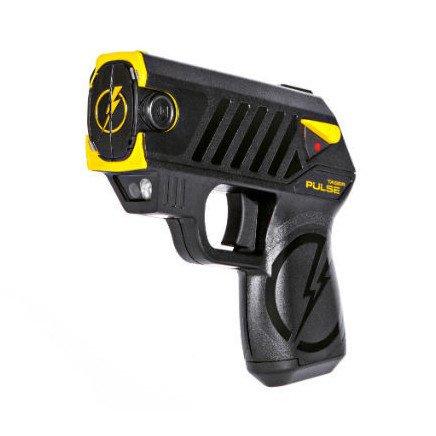Table of Contents
- Legal Implications of Carrying Concealed Stun Guns in Restricted Areas
- Understanding the Safety Concerns Behind Concealed Stun Gun Bans
- Best Practices for Compliance and Alternative Self-Defense Options
- Closing Remarks
In many jurisdictions, the possession of concealed stun guns is subject to strict regulations, with certain locations enforcing absolute prohibitions. Government buildings, including courthouses and legislative offices, often ban these devices to ensure safety and maintain order. Similarly, airports and other transportation hubs implement tight security screenings where stun guns are not allowed, reflecting concerns about aviation and public transit safety. Educational institutions from primary schools to universities also enforce no-weapons policies rigorously, including the prohibition of concealed stun guns, to create a secure learning environment for students and staff.
Moreover, event venues and public gatherings such as stadiums, concert halls, and large festivals typically uphold strict rules against carrying any concealed weapons – stun guns included – to prevent potential violence or panic. Correctional facilities and detention centers further underscore this strict stance, where the introduction of such devices could jeopardize both inmate and staff safety. Understanding these restrictions is crucial for responsible ownership and lawful use, as violating these bans can result in severe legal consequences.
Legal Implications of Carrying Concealed Stun Guns in Restricted Areas
Carrying concealed stun guns in prohibited zones can lead to serious, long-lasting legal consequences. Many jurisdictions classify the possession of such devices in sensitive locations as a criminal offense, which may result in substantial fines, confiscation of the stun device, and even imprisonment. Enforcement agencies apply strict scrutiny, especially in areas like government buildings, schools, and public transportation hubs, where the potential risk to public safety is high. It’s crucial to understand that ignorance of local regulations is rarely accepted as a defense, making compliance not just a recommendation, but a legal necessity.
Additionally, penalties vary depending on the nature of the restricted area and the intent with which the stun gun is carried. In some states, carrying concealed stun guns near courthouses or state capitols might be considered a felony, while in private properties like shopping malls, violations often lead to immediate removal or trespassing charges. Key points to remember include:
- Legal distinctions: Some locations categorically ban all kinds of weapons, including less-lethal devices.
- Permit restrictions: Holding a carry permit for firearms does not always extend to stun guns.
- Increased scrutiny: Restricted areas often have enhanced security measures and may involve metal detectors or law enforcement checkpoints.
Understanding the Safety Concerns Behind Concealed Stun Gun Bans
Legislators and safety advocates emphasize that the primary concern behind prohibiting concealed stun guns is the potential misuse and accidental harm. These devices, while effective for self-defense, can cause serious injury or provoke unintended violent encounters when carried openly or concealed without proper regulation. In crowded public spaces or high-security areas, the presence of an electrically charged weapon can escalate conflicts or interfere with law enforcement’s ability to maintain order. Restrictions aim to minimize risks related to impulsive use and ensure that the devices do not fall into the wrong hands, particularly among vulnerable populations such as minors or individuals with a history of violence.
Additionally, authorities cite challenges in enforcement and identification as compelling reasons for bans. When stun guns are concealed, it becomes difficult for security personnel to distinguish between legal and illegal possession, raising concerns about the safety of bystanders and officials. This complexity leads many jurisdictions to impose outright prohibitions in sensitive locations such as government buildings, schools, airports, and places where alcohol consumption is prevalent. Typical factors considered include:
- Prevention of surprise attacks in high-traffic environments
- Reducing accidental discharge risks especially in confined settings
- Ensuring seamless security operations without the added burden of weapon detection
Best Practices for Compliance and Alternative Self-Defense Options
To navigate the complexities of regulations surrounding stun guns, it is essential to stay informed and proactive. Always verify local and state laws before considering the possession or use of a concealed stun gun. Laws can vary dramatically, and ignorance is no defense if you inadvertently carry one into restricted zones such as government buildings, airports, or private establishments where these devices are banned. Keeping stun guns registered (if required) and stored securely when not in use not only demonstrates responsible ownership but also helps avoid legal complications.
When compliance means leaving your stun gun behind, alternative self-defense strategies can offer effective protection without legal risks. Consider investing in less regulated options like pepper spray, personal alarms, or tactical flashlights, which can incapacitate or deter an attacker while being widely accepted in more jurisdictions. Additionally, enrolling in self-defense classes enhances situational awareness and physical preparedness, providing confidence and skills that no device can match.
- Regularly review local regulations to ensure ongoing compliance.
- Use legally permitted self-defense alternatives in restricted areas.
- Practice safe storage and transport to avoid accidental misuse or loss.
- Consider non-lethal tools and personal safety training as part of your defense plan.
Closing Remarks
In conclusion, understanding the strict prohibition of concealed stun guns in certain places is crucial for responsible ownership and lawful use. Whether it’s government buildings, schools, airports, or other high-security zones, these restrictions are in place to ensure public safety and maintain order. Staying informed about where stun guns are strictly prohibited helps you avoid legal trouble and fosters a safer community for everyone. Always remember to check local laws and regulations before carrying any self-defense device, and prioritize safety and responsibility above all else.Check Our Other Blogs
- StunGun – Your Trusted Source for Stun Guns, Laws, and Self-Defense Tips
- PepperSprayLaws – Your Trusted Resource for Pepper Spray Information
- StunGunLaws – Your Trusted Guide to Stun Gun Legality and Safety





